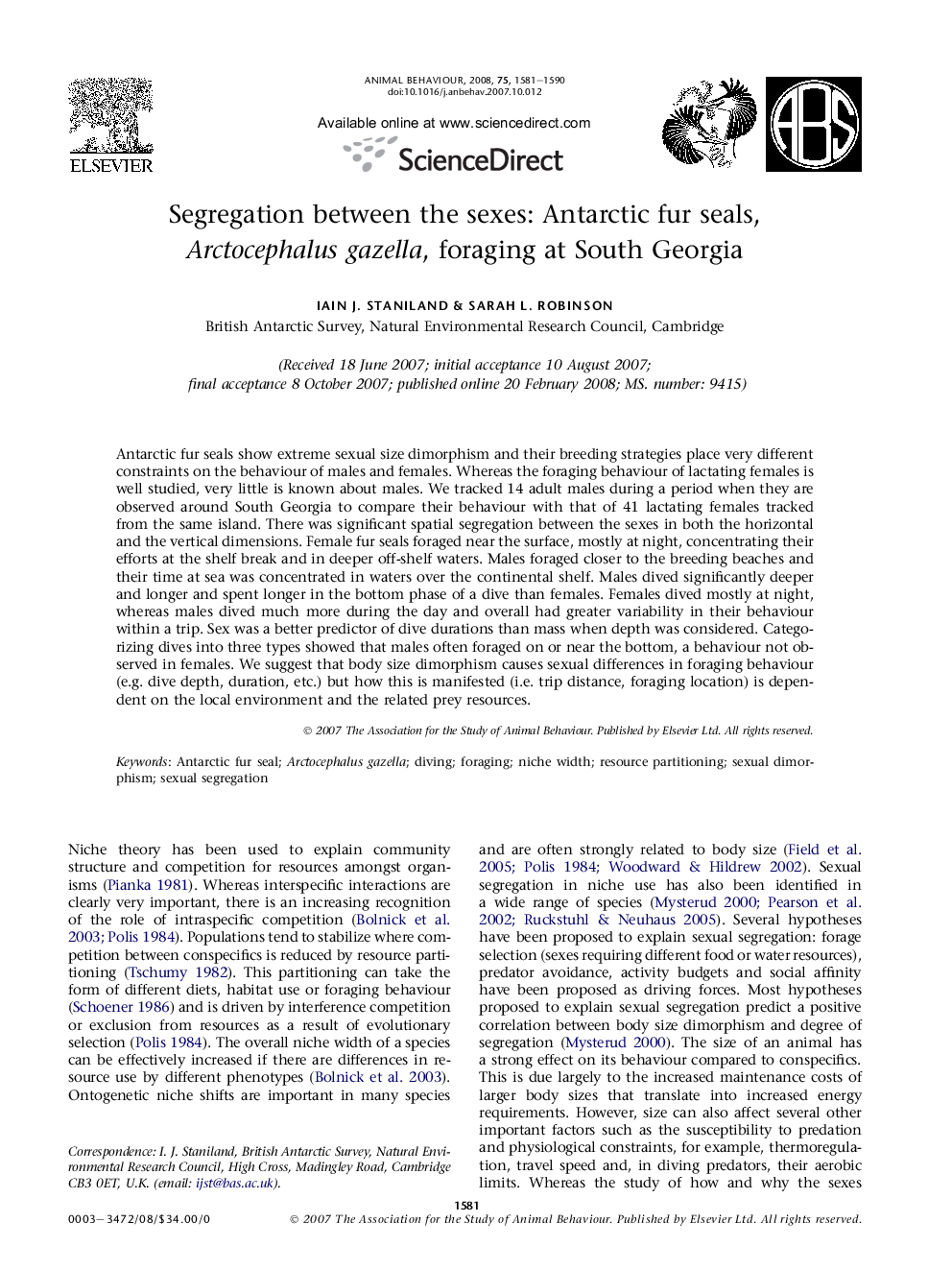| Article ID | Journal | Published Year | Pages | File Type |
|---|---|---|---|---|
| 2417774 | Animal Behaviour | 2008 | 10 Pages |
Antarctic fur seals show extreme sexual size dimorphism and their breeding strategies place very different constraints on the behaviour of males and females. Whereas the foraging behaviour of lactating females is well studied, very little is known about males. We tracked 14 adult males during a period when they are observed around South Georgia to compare their behaviour with that of 41 lactating females tracked from the same island. There was significant spatial segregation between the sexes in both the horizontal and the vertical dimensions. Female fur seals foraged near the surface, mostly at night, concentrating their efforts at the shelf break and in deeper off-shelf waters. Males foraged closer to the breeding beaches and their time at sea was concentrated in waters over the continental shelf. Males dived significantly deeper and longer and spent longer in the bottom phase of a dive than females. Females dived mostly at night, whereas males dived much more during the day and overall had greater variability in their behaviour within a trip. Sex was a better predictor of dive durations than mass when depth was considered. Categorizing dives into three types showed that males often foraged on or near the bottom, a behaviour not observed in females. We suggest that body size dimorphism causes sexual differences in foraging behaviour (e.g. dive depth, duration, etc.) but how this is manifested (i.e. trip distance, foraging location) is dependent on the local environment and the related prey resources.
